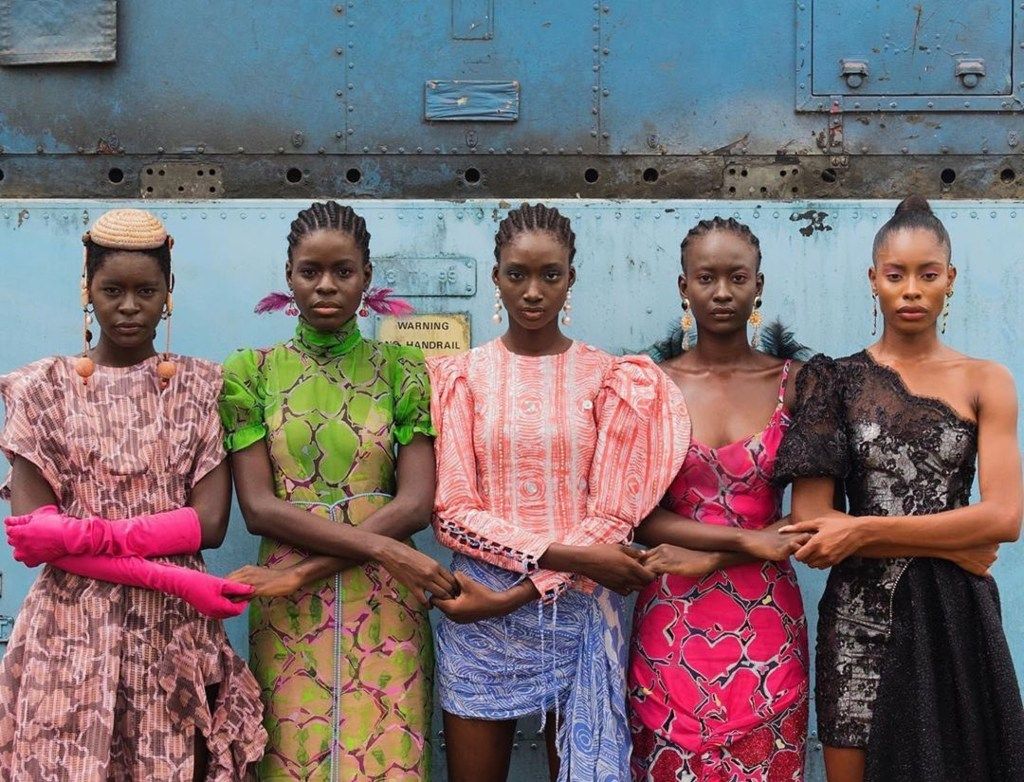PARIS – Africa’s fashion industry has the potential to increase the continent’s prosperity by 25 percent, but the burgeoning sector must overcome hurdles including a lack of investment and infrastructure, patchy intellectual property legislation and high fabric sourcing costs, a UNESCO report said on Thursday.
Presenting the report at Lagos Fashion Week, Audrey Azoulay, director general of the United Nations’ cultural agency, said the continent holds all the cards to become one of the next world fashion leaders, provided government authorities mobilize to defend the interests of everyone from farmers to designers.
“Fashion is really taking off in Africa, and this report shows that it can be developed even further. In order to achieve this, designers, professionals and the entire production and distribution infrastructure need more support from public decision-makers,” she said in a statement.
“The potential is enormous, not only for the economy, but also for young people’s inclusion, women’s empowerment and for African culture to resonate globally,” Azoulay added.
To that end, the 80-page report, titled “The Fashion Sector in Africa: Trends, Challenges and Opportunities for Growth,” sets out a series of detailed recommendations.
The first study of its kind, it notes that despite being a major producer of raw materials, the continent imports much of its apparel, including a large amount of second-hand clothing of which an estimated 40 percent ends up as waste in landfill sites.
The market value of clothing and footwear in sub-Saharan Africa alone was estimated at $31 billion in 2020 and is set to continue growing every year. With 32 fashion weeks held every year, the continent is brimming with designers.
Africa is expected to be home to 1.7 billion people by 2030, the report underlined. Thanks to a growing young population and rapid digitalization, UNESCO forecasts a 42 percent increase in demand for African designer fashion over the next 10 years.
“This growing population is a comparative advantage for the continent, as it will enable the scaling up of industrial garment production, representing an opportunity for job creation and income generation. In addition, a rise in disposable incomes and a growing middle class are expanding the customer base for African fashion,” it said.
“While a combination of bespoke tailored and imported garments were the main source of clothing for most Africans in the last few decades, economic and social changes have led to a shift in the balance toward the production of African ready-made garments, both for local consumption and for export,” it continued.
“This trend is reinforced by evolving consumer tastes and an excitement for products ‘Made-in-Africa,’ which has been fueled in part by an increase in African creative production in other sectors, particularly film and music,” the report said.
Many African fashion designers tap into local textile traditions, while some states and local authorities actively encourage people to wear domestically produced textiles and garments. Ghana, Kenya, Lesotho, Malawi and Rwanda, for instance, promote “Localwear Fridays.”
Cotton is a major crop, produced in 37 out of 54 countries on the continent. It provides income to more than 3.5 million farmers, 17 percent of whom are women.
But while African cotton fiber production accounted for 7.5 percent of global production in 2022, sub-Saharan countries exported more than 81 percent of the raw cotton they produced rather than transforming and using it locally, the report found.
“By exporting most of its raw fibers, the continent sees a consistent significant loss in the potential economic value of these crops and restricts the growth of the textile and fashion value chain in Africa,” it said.
In an online press conference held ahead of the publication of the report, Toussaint Tiendrebeogo, head of the diversity of cultural expressions entity at UNESCO, outlined some of the challenges faced by the fashion sector.
He said the continent lacked investment in the infrastructures needed to transform cotton locally and help designers develop their brands. Another issue is the lack of professional training in fields ranging from design to entrepreneurship and craftsmanship.
“Our study revealed that, even though there were nearly 500 training structures in Africa, few of them offered quality training of the kind that would allow this sector to realize its full potential,” Tiendrebeogo said.
And while international trade agreements have increased the market for African products like raw cotton, these have also opened the door to the import of cheap textiles and clothes.
Noting that Africa is the destination of a third of all global exports of second-hand garments, he said this not only resulted in an environmental “disaster” but also prevented local clothing makers from selling their wares, since these second-hand imports are often cheaper. Finally, he highlighted the issue of appropriation.
“For example, we noted that between 1994 and 2011, the export of textiles such as kente, which is produced in Ghana, or other traditional textiles fell by almost 30 percent precisely due to the fact that these designs are copied and reproduced elsewhere, and – this is the paradox – often even sold back to Africa,” he said.
While issues of cultural appropriation are governed at the global level by World Intellectual Property Organization (WIPO) regulations, states often fail to transpose those rules at the national level, Tiendrebeogo said.
“When these questions are brought in front of international courts, as we have seen in the case of Mexico, for example, states are often not well equipped to face off against large houses with deep pockets and huge legal teams,” he said.
The official noted that UNESCO can provide additional protection by highlighting cultural heritage practices. For instance, Egypt’s Sa’eed weaving technique was added to the organization’s List of Intangible Cultural Heritage in Need of Urgent Safeguarding in 2020.
Globally, the report recommended strengthening legal protections for designers and professionals in terms of intellectual property rights, salary levels and working conditions. It noted that UNESCO is already helping 23 African countries to improve the status of artists through laws and regulations.
It said investment in small and medium-sized firms is key, as they account for 90 percent of businesses in the fashion sector in Africa and offer a gateway to employment for younger people.
The report also advocated that countries set environmental standards, noting that even though the fashion industry remains one of the most polluting industries, Africa can make greater use of local materials, innovate around sustainable textiles and raise awareness of sustainable consumption patterns.
Furthermore, the continent has the potential to become a leader in sustainable cotton farming. Organic cotton fiber output in Sub-Saharan Africa grew by over 90 percent from 2019 to 2020 and accounted for 7.3 percent of global organic cotton production, the report said.
Lastly, it recommended that countries set up mentoring schemes to ensure that traditional textile techniques are passed on from generation to generation.
In parallel, UNESCO called for an increase in the number of qualifications available in key related professions such as quality control, commercial law, marketing, and in training in new technologies including 3D printing and e-commerce.
“Across the continent, people are increasingly looking for products ‘Made in Africa’ which they see as a symbol of pride and a way to affirm their identity. But in order to meet this growing demand, the entire production chain needs to be strengthened,” said Omoyemi Akerele, director of Lagos Fashion Week.
“This UNESCO report is useful because it maps out the path to achieve this, and it will increase the awareness of public decision-makers,” she added.

